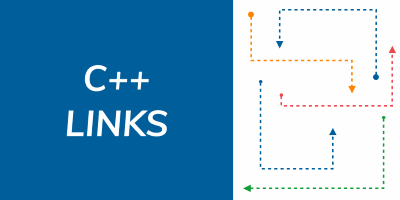std::variant and the power of pattern matching - Nikolai Wuttke - Meeting C++ 2018
A talk on pattern matching with C++17 std::variant
std::variant and the power of pattern matching
by Nikolai Wuttke
October 25, Pavia, Italy
November 6-8, Berlin, Germany
November 3-8, Kona, HI, USA
By Meeting C++ | Feb 10, 2019 08:01 AM | Tags: meetingcpp intermediate c++17 basics
A talk on pattern matching with C++17 std::variant
std::variant and the power of pattern matching
by Nikolai Wuttke
By Meeting C++ | Feb 9, 2019 04:59 AM | Tags: tmp meetingcpp intermediate experimental c++17 c++14 c++11 basics advanced
Ivan Cukic on TMP and ...
A new look at TMP
by Ivan Cukic
By Meeting C++ | Feb 8, 2019 03:56 AM | Tags: tools performance meetingcpp intermediate efficiency build system build
A guide to faster builds
The Hitchhikers guide to faster builds
by Viktor Kirilov
By Meeting C++ | Feb 7, 2019 03:18 AM | Tags: meetingcpp intermediate efficiency c++17 c++14 c++11 basics
A great talk on how to initialize in C++
Initialization in modern C++
by Timur Doumler
By Meeting C++ | Feb 6, 2019 03:53 AM | Tags: meetingcpp intermediate c++17 c++14 advanced
Odin Holmes talking about his Mixin for C++ Design
C++ Mixins
by Odin Holmes
By robwirving | Feb 1, 2019 10:15 AM | Tags: None
Episode 185 of CppCast the first podcast for C++ developers by C++ developers. In this episode Rob and Jason are joined by Eric Fiselier to talk about libc++ and his contributions to the library
CppCast Episode 185: libc++ with Eric Fiselier
by Rob Irving and Jason Turner
About the interviewee:
Eric is as Software Engineer at Google working on Abseil and other core libraries. He is also a maintainer of libc++ and active member of the standards committee. In addition to writing C++ libraries, Eric enjoys hacking on Clang. Most recently Eric has been interested in using tooling to make C++ code healthier.
By Meeting C++ | Feb 1, 2019 06:40 AM | Tags: usergroups meetingcpp community
The monthly overview about upcoming C++ User Group meetings at Meeting C++
C++ User Group meetings in February
by Jens Weller
By Meeting C++ | Feb 1, 2019 06:16 AM | Tags: meetingcpp intermediate functional programming experimental c++17 basics advanced
Phil Nash presenting on your options with Optional
Option(al) is not a failure
by Phil Nash
By Meeting C++ | Jan 31, 2019 05:34 AM | Tags: tools tooling meetingcpp intermediate efficiency basics advanced
A new way to debug on windows presented by James McNellis
Time Travel Debugging
by James McNellis
By bfilipek | Jan 29, 2019 12:31 PM | Tags: None
The next episode of the ‘most useful C++ links’ is now available:

C++ Links #16
by Bartlomiej Filipek and Wojciech Razik
From the article:
See the most important and useful articles, podcasts and videos that happen between 19th and 25th of January 2019.
This week you will find a link to a ray-tracer, real-life examples of ranges, new useful features of Microsoft Visual Studio and many more!